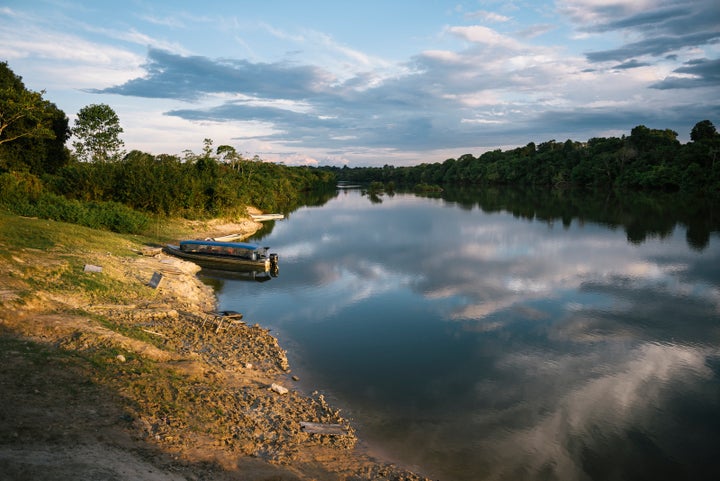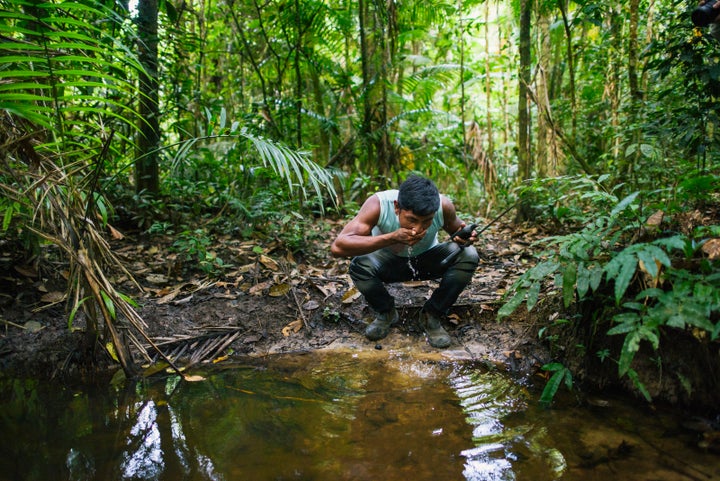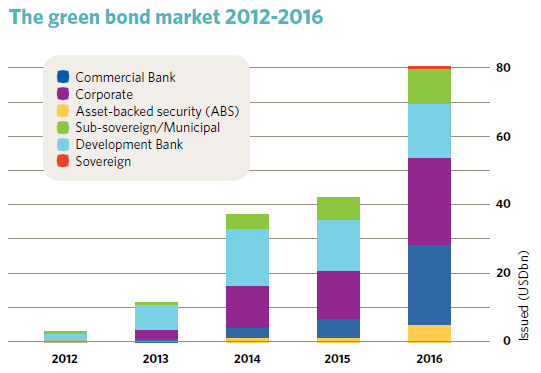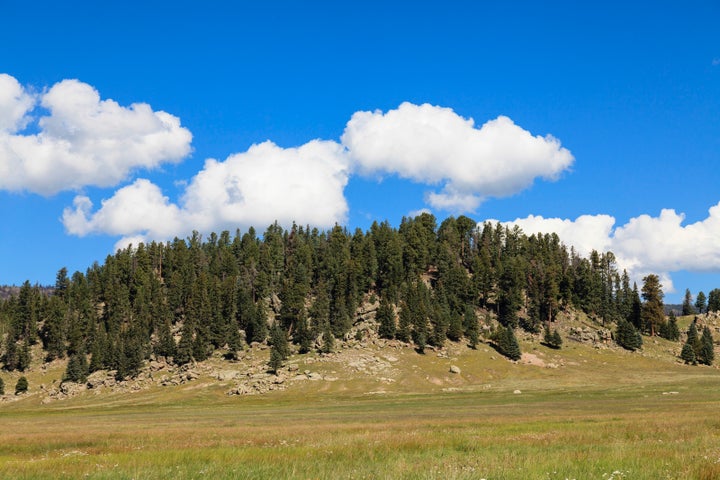
Pot-Kro Village off of Rio Bacaja(Amazon/Brazil)
As more and more world leaders call for action on climate change, a difficult challenge arises: How do we pay for it?
It will take an estimated $5-7 trillion per year over the next 15 years to solve climate change and to meet the other U.N. Sustainable Development Goals ("SDGs"), from ending extreme poverty to ensuring clean water and sanitation for all. That’s a staggering amount of money.
Annual government grants today only punch in at $142.6 billion. Philanthropy produces about $400 billion per year in the U.S., though only a small percentage of this goes to environment or sustainability issues. That leaves a huge financing gap.
Closing that gap is likely the most important thing an environmental CEO like me can focus on.
Despite the scope of the challenge, there’s good news. Institutional investors—pension funds, insurance companies, sovereign wealth funds—have an estimated $90 trillion in private capital under management, and some have shown a willingness to invest in projects that can achieve strong financial returns while achieving critical environmental goals. The key to unlocking large-scale environmental and social progress is incentivizing those dollars to flow toward addressing the SDGs.
There are three main keys to catalyzing these flows:
1) Design smart government policy.
Designing smart government policy is the most important step toward mobilizing private investment in a sustainable future.
We often get this right. Consider the emerging renewable portfolio standards in the U.S., now in place in 29 states. These policies have unleashed huge investments by the private sector. Likewise, solar tax subsidies in the US (and complimentary policies in other countries) have catalyzed enormous private capital flows and driven the cost of utility-scale solar energy down some 75% since 2009.
Another good example is Brazil’s Forest Code, which requires landowners in parts of the Amazon to maintain 80% of their property under native vegetation. While enforcement of the code has been challenging, it's had a hugely positive impact. For example, it led to the Soy Moratorium, a voluntary ban on the sale of soy from any land deforested after 2006. The result: an 80% reduction in deforestation in the Amazon—one of conservation’s biggest wins ever.

The Nature Conservancy is enabling compliance with Brazil’s progressive Forest Code, while increasing economic opportunity.
Even a clear and visionary statement by a government can have a positive impact at scale. Take the Chinese government’s recent declaration calling for 20% of all new cars sold in China to run on alternative fuel by 2025. Companies like GM are counting on China to be an ever more important market in the years ahead. It's not surprising to see GM now making its own bold announcements about its electric car ambitions.
The policy that environmentalists like me would most like to see is a price on carbon. Most economists agree that there is no better way to quickly lower greenhouse gas emissions. By relying on market signals, a carbon price would work on the lowest-cost basis and with the least amount of government interference. It’s one of the few plans that has broad, bipartisan support.
There are many other examples of leveraging government leadership to catalyze private sector investment. The key point is that if we really want to make comprehensive and speedy environmental progress at scale, and if we want commercial capital to drive it, government policy is the most important thing to get right.
2) Develop creative financial accelerators.
From the municipal level to the international stage, we’re beginning to see new mechanisms to unlock private financing for conservation. These new solutions often resemble traditional finance vehicles—with an environmental twist.
Take, for example, the explosive growth of the “green bonds” market. These debt instruments, whose proceeds fund climate-friendly and other environmentally-sound projects, have grown from $3B in 2012 to $81B in 2016 and are projected to reach $150B in 2017. Mainstream companies like Apple and Toyota, municipalities like New York City, and countries like France and Poland have all issued them—but the biggest market is emerging in China. Green bonds have become mainstream investments to support sustainable and low-carbon projects.

The green bonds market, 2012-2016.
Then there are Green Banks: financial institutions that partner with the private sector to accelerate deployment of a wide range of green infrastructure and clean energy projects. Green Banks can help bridge the scaling gap for commercial technologies that haven’t yet found widespread success or adoption. Like traditional banks, they can be public, quasi-public or independent—and they’re showing up everywhere. There are several state-level green banks in the U.S. (NY, RI, CT, HI, and even Montgomery County, MD). At the national level, the UK, Australia and Japan also make use of Green Banks.
The new frontier for development finance institutions like the World Bank and the Green Climate Fund is all about “blended finance.” The goal of blended finance is to use foreign aid dollars, often in short supply, to de-risk and leverage vastly more private investment in projects that both achieve climate change and SDG-related outcomes—all while earning a decent ROI.
One stellar example of blended finance is Overseas Private Investment Corporation’s (OPIC) program of accelerating investments in renewable energy in India. OPIC provided a modest $20 million in government supported grants that is expected to leverage some $400 million of investments in renewables, effectively blending OPIC and private capital to get renewable energy projects off the ground in India.
3) Put data to work.
If we're going to continue to unlock these kinds of financial innovations, we’re going to need compelling evidence that these investments in nature will produce high returns. That means not only more data—but smarter data. It requires environmental engineers to collaborate with business people to turn flow rates, soil carbon stocks, and avoided forest conversion into dollars and cents. We can’t expect funders to invest in these deals based on anecdotal evidence or feel-good reasons.
I learned this firsthand back when I first pitched Carlos Salazar, CEO of Coca-Cola FEMSA, on water funds. Carlos was looking for ways to protect the water supply of communities where FEMSA operates. We persuaded him to view the forests upstream from his bottling plants—which ensure a steady flow of water to the valley below—as assets to be managed in his business plan. A water fund program, where cities invest in upstream conservation efforts for the downstream benefit of clean water, seemed like the perfect solution for Carlos. But to bring him on board, he needed some hard numbers.

Hillock at Valles Caldera National Preserve. The Rio Grande Water Fund is will generate sustainable funding for a 10-30 year program of large-scale forest and watershed restoration treatments.
Carlos asked me the kinds of tough questions any good business person would ask. What species of trees would produce the most water? Where are the most important places to protect or restore? And, most importantly to him, how much water would he get from each dollar he spent on conservation?
Answering questions like these isn't always easy. But it's absolutely necessary if we're going to build the business case for taking these kinds of investments to scale. Fortunately, we’ve got the science tools and financial models to answer these questions.
Conservationists also need to keep an eye on the data needs of corporate directors and institutional investors. More and more, companies and investors are being encouraged to incorporate environmental risks into their decision making. Calculating these risks—and opportunities—means addressing data gaps, like the ones spelled out by the Financial Stability Board’s Task Force on Climate-related Financial Disclosure.
These kinds of data could lead investors to better understand the material risks that unmitigated climate change poses to their portfolios. And, conversely, data like this clearly spells out the opportunities that come from investing in a low-carbon, sustainable future.
Looking ahead
There are plenty more cases that show how creative financial thinking and clever partnerships can lead to big breakthroughs. Examples that I’ve personally worked on at The Nature Conservancy include a debt swap for nature in Seychelles, an insurance policy for coral reefs with Swiss Re near Cancun, the Nature Vest impact capital initiative, the Coalition for Private Investment in Conservation, and the first ever Technology Accelerator for Sustainability.
These deals are just a sample of what’s to come. A prosperous and healthy future is within our grasp—but only if we can close the funding gap of a few trillion dollars that's standing in our way. At the end of the day, moving big pools of capital will require leaders—from governments, businesses, and NGOs alike—to stick their necks out and try something new. “Business as usual” just isn’t going to cut it.
. . .
This story originally appeared on November 28, 2017 in Forbes.
Mark Tercek is the president and CEO of the Nature Conservancy and author of Nature’s Fortune. Follow Mark on Twitter: @MarkTercek.
